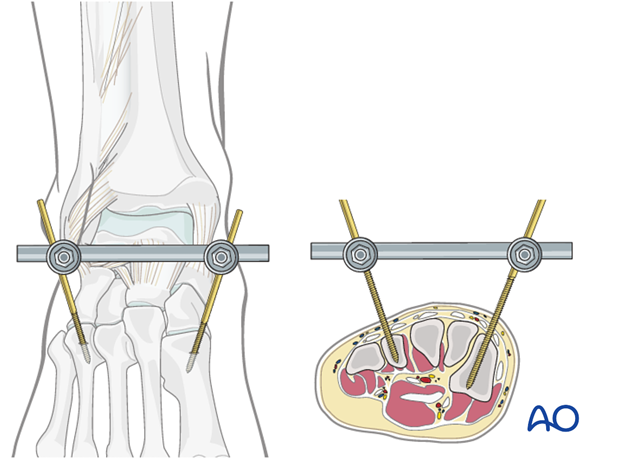Safe zones in the tibia
1. Safe zone in the lower half of the tibia shaft
For the insertion of tibial Schanz screws in the lower half of the shaft, there is a wide safe zone from the sagittal plane, medially to the coronal plane. These screws will normally be inserted sagittally.
Take care not to penetrate the posterior cortex excessively as this will impale the tibialis posterior muscle and even endanger the posterior neurovascular bundle.
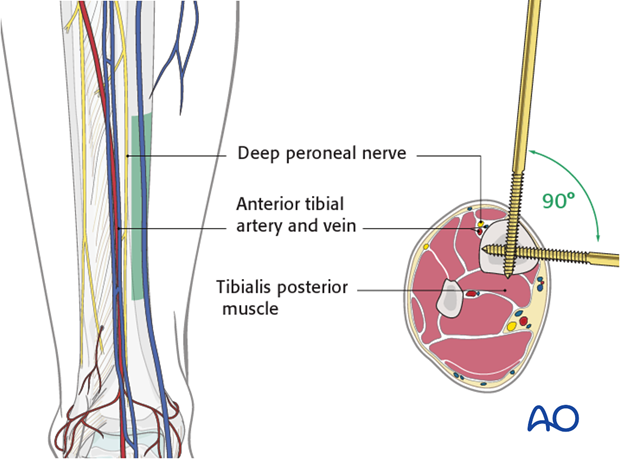
2. Safe zone in the distal tibia
When inserting Schanz screws in the distal zone consider the position of the anterior tibial artery and vein. Percutaneous insertion of Schanz screws in this area is dangerous. A minimal incision will allow preparation and safe insertion.
Schanz screws at this level should be inserted as shown in the illustration from anterior to posterior. Use small retractors to protect neurovascular structures and extensor tendons.
A second Schanz screw can be inserted from medial to lateral, medial to the tibialis anterior tendon.
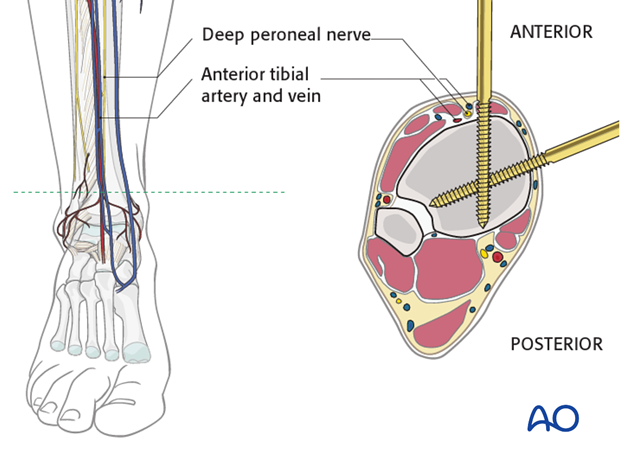
Transfixation in the distal tibia
When inserting pins in the distal zone take into account the position of the anterior tibial artery and vein. Percutaneous insertion of pins in this area is dangerous. A minimal incision will allow preparation and safe insertion.
The peroneal tendons are located very close to the posterolateral border of the fibula and therefore at risk if pins are inserted in this direction.
The first pin should be inserted from lateral to medial through the middle of the tibia anterior to the fibula. A second pin should be inserted from posterolateral to anteromedial, through the middle of the fibula. A third pin should be inserted from posteromedial (anterior to the posterior tibial tendon) to anterolateral.
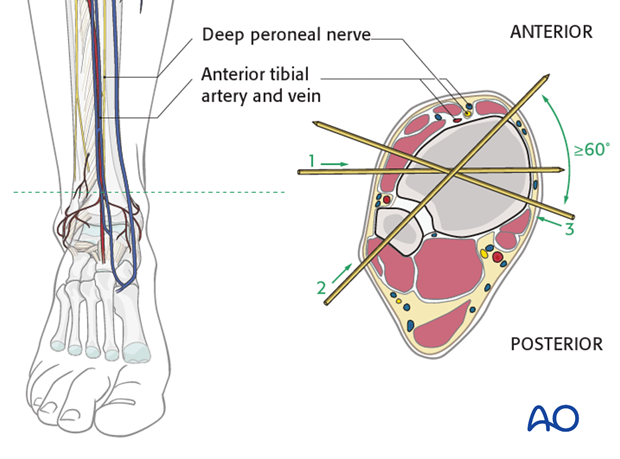
Pins should be carefully inspected intraoperatively because tendons and even neurovascular structures are often impaled during insertion. It therefore is recommended to use an incision with spreading of tissues to expose bone. Recognition of tendon impalement requires intraoperative exchange of the pin to avoid infection and to facilitate early motion.
Avoid intraarticular placement of the wires to reduce the risk of joint infection. Pins that are inserted less than 20 mm proximal to the articular surface bear the risk of penetration of the joint capsule.

3. Insertion of a Schanz screw into the calcaneus
A 5 mm Schanz screw inserted into the calcaneal tuberosity from medial to lateral minimizes risk to neuro vascular structures behind the medial malleolus (posterior tibial artery, and medial and lateral plantar nerves, and the medial calcaneal nerve). If swelling permits, locate the posterior tibial pulse: if this is not palpable with certainty, examine the pulse of the uninjured leg and use its position as a guide to the probable path of the bundle at the injured side.
The safe zone is behind the green dotted line shown in the figure.
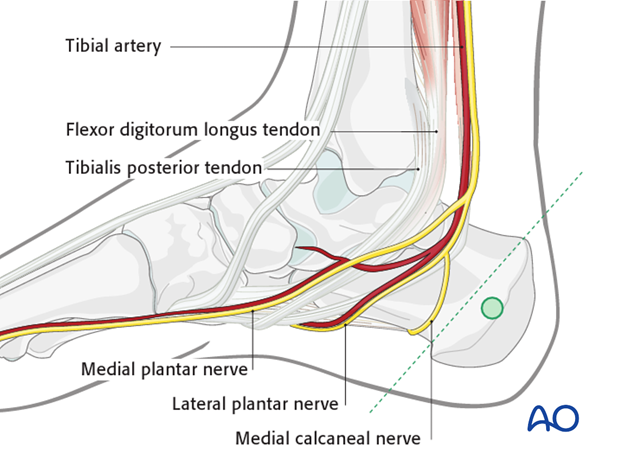
4. Schanz screw insertion into the metatarsals
A small Schanz screw (4 mm) can be placed in the second metatarsal. However, remember that the dorsalis pedis artery and veins and deep peroneal nerve lie on the medial side of the second metatarsal base. A pin inserted here requires blunt dissection to the bone and careful retraction.

Alternatively, a small Schanz screw (4 mm) can be placed in the first and fourth metatarsals to allow for control of foot position to prevent equinovarus. The extensor tendons should be avoided. Overpenetration of the plantar cortex can endanger important plantar structures: Insert the screw carefully.
